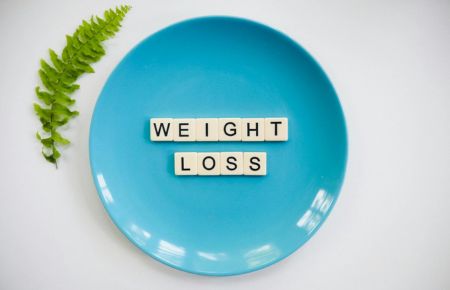
The Best Plant-Based RecipesMove over meat, it’s time to get our greens on! These ten plant-based recipes are so good, you won’t even miss the meat. From flavorful soups and stews to hearty main dishes and even some sweet treats, these recipes will show you just how delicious a plant-based diet can be.
So what are you waiting for? Get cooking!
The Benefits of a Plant-Based Diet
A plant-based diet has many benefits that extend far beyond weight loss. Studies have shown that plant-based diets can lower blood pressure, reduce the risk of heart disease and stroke, and even help reduce the risk of some cancers.
But that’s not all. Plant-based diets have also been shown to boost energy levels, improve digestion, and promote a healthy complexion. So, if you’re looking to improve your overall health, a plant-based diet is a great place to start.
Don’t Miss: Healthiest Fruits For Your Body
The Top Ten Healthiest Plants to Eat
The Top Ten Healthiest Plants to EatIf you’re looking to add more healthy plants to your diet, look no further than this list of the top ten healthiest plants to eat. From leafy greens to root vegetables, these plants are packed with nutrients that can help improve your health.
Spinach: Spinach is a nutrient-rich leafy green that’s packed with vitamins A, C, and K, as well as folate and iron. This leafy green is also a good source of magnesium, potassium, and calcium.
Spinach can be enjoyed cooked or raw and is a versatile ingredient that can be added to a variety of dishes.
Broccoli: Broccoli is a nutrient-dense vegetable that’s rich in vitamins C and K, as well as fiber and potassium.
This cruciferous vegetable is also a good source of calcium and vitamin A. Broccoli can be enjoyed cooked or raw, and makes a great addition to salads, stir-fries, and pasta dishes.
Kale: Kale is a nutrient-rich leafy green that’s packed with vitamins A, C, and K, as well as fiber and iron. This leafy green is also a good source of magnesium, calcium, and potassium. Kale can be enjoyed cooked or raw and makes a great addition to salads, soups, and stews.
Swiss Chard: Swiss Chard is a nutrient-rich leafy green that’s packed with vitamins A, C, and K, as well as magnesium, potassium, and iron. This leafy green can be enjoyed cooked or raw and makes a great addition to salads, stir-fries, and pasta dishes.
Arugula: Arugula is a nutrient-rich leafy green that’s packed with vitamins A, C, and K, as well as calcium and iron. This leafy green can be enjoyed raw or cooked and makes a great addition to salads, pizzas, and pasta dishes.
Collard Greens: Collard Greens are a nutrient-rich leafy green that’s packed with vitamins A, C, and K, as well as fiber and calcium. This leafy green can be enjoyed cooked or raw and makes a great addition to salads, soups, and stews.
Mustard Greens: Mustard Greens are a nutrient-rich leafy green that’s packed with vitamins A, C, and K, as well as fiber and iron. This leafy green can be enjoyed cooked or raw and makes a great addition to salads, stir-fries, and soups.
Beet Greens: Beet Greens are a nutrient-rich leafy green that’s packed with vitamins A, C, and K, as well as magnesium, potassium, and calcium. This leafy green can be enjoyed cooked or raw and makes a great addition to salads, stir-fries, and soups.
Turnip Greens: Turnip greens are a nutrient-rich leafy green that’s packed with vitamins A, C, and K, as well as fiber and calcium. This leafy green can be enjoyed cooked or raw and makes a great addition to salads, stir-fries, and soups.
Watercress: Watercress is a nutrient-rich leafy green that’s packed with vitamins A, C, and K, as well as calcium and iron. This leafy green can be enjoyed raw or cooked and makes a great addition to salads, sandwiches, and soups.
Buy Alpine at Discounted Price – Secret for Healthy Weight loss
The Five Worst Plants to Eat
If you’re looking for a list of the worst plants to eat, you’ve come to the right place! Here are the five plants that you should avoid at all costs:
Poison Ivy: This plant is best known for its itchy and painful rash, but eating it can be just as dangerous. Poison ivy contains a toxic compound called urushiol, which can cause severe gastrointestinal distress if ingested.
Poison Oak: Like poison ivy, poison oak also contains urushiol, meaning it can cause the same uncomfortable side effects if eaten.
Poison Sumac: Poison Sumac is yet another plant that contains urushiol. Eating this plant can cause nausea, vomiting, and diarrhea.
Jimsonweed: Jimsonweed is a plant that contains a toxic compound called atropine. Atropine can cause dizziness, confusion, and hallucinations if ingested.
Water Hemlock: Water Hemlock is considered one of the most poisonous plants in North America. It contains a toxic compound called cicutoxin, which can cause seizures and even death.
The Risks of a Plant-Based Diet
A plant-based diet is often lauded for its health benefits, but there are some risks to consider as well. While a plant-based diet can provide many nutrients that are essential to good health, it can also lack certain nutrients that are found in animal products.
Additionally, a plant-based diet can put people at risk for developing certain health conditions, such as anemia or osteoporosis. That said, a plant-based diet can be healthy for most people when done correctly. The key is to make sure that you’re getting all the nutrients your body needs and to talk to your doctor if you have any concerns.
How to Transition to a Plant-Based Diet
“How to Transition to a Plant-Based Diet”A plant-based diet is one that emphasizes fruits, vegetables, whole grains, and legumes. This type of diet has been shown to have numerous health benefits, including reducing the risk of heart disease, stroke, and some types of cancer.
If you’re interested in transitioning to a plant-based diet, there are a few things you should keep in mind. First, make sure to do your research. There are a lot of resources available online and in books that can help you make the transition.
Second, take things slowly. You don’t have to go completely plant-based overnight.
Start by gradually adding more plant-based foods to your diet and reducing your intake of animal products. Finally, be prepared for some trial and error. Not every plant-based food is going to be your cup of tea, but with a little experimentation, you’ll find plenty of foods that you enjoy.
Plant-Based Diet FAQs
The plant-based diet is becoming more popular, but there are still many questions about it. Here are some frequently asked questions about plant-based diets: What is a plant-based diet?
A plant-based diet is one that focuses on plants for most or all of its food. This includes fruits, vegetables, grains, legumes, and nuts.
Why would someone want to eat a plant-based diet?
There are many reasons why someone might choose to eat a plant-based diet. Some people do it for health reasons, as plants are a very healthy way to eat. Others do it for environmental reasons, as a plant-based diet can be more sustainable than one that includes animal products.
And still, others do it for ethical reasons, as they believe it is wrong to eat animals. Isn’t a plant-based diet boring?
Absolutely not! There are endless possibilities when it comes to plant-based meals. With a little creativity, you can make delicious and satisfying meals that are anything but boring.
Isn’t a plant-based diet expensive?
It doesn’t have to be. While there are some more expensive plant-based foods, such as certain nuts and seeds, there are also plenty of affordable options, like beans and rice. I’m not ready to go completely plant-based.
What are some steps I can take?
That’s totally understandable. Going plant-based can be a big change, and it’s not always easy to make the switch all at once. A good way to start is by gradually adding more plant-based foods to your diet and reducing your consumption of animal products.
Plant-Based Diet Resources
The plant-based diet is becoming more popular each year. There are many resources available to help you make the transition to a plant-based diet.
Here are some of the best plant-based diet resources available. The Fork Over Knives website is a great resource for those interested in a plant-based diet. The website has a wealth of information on plant-based diets, including recipes, tips for transitioning to a plant-based diet, and more.
The Physicians Committee for Responsible Medicine is another great resource for those interested in a plant-based diet. The Physicians Committee has a wealth of information on plant-based diets, including research on the health benefits of plant-based diets, recipes, and more. Harvard Health Publishing is a third great resource for those interested in a plant-based diet.
Harvard Health Publishing is the health information arm of Harvard Medical School. Harvard Health Publishing has a wealth of information on plant-based diets, including articles on the health benefits of plant-based diets, recipes, and more.
Conclusion
In conclusion, we can see that web articles are a great way to communicate with others and share information. They can also be used to promote products and services.
However, it is important to remember that not all web articles are created equal. There are many factors that can make or break an article, such as the quality of the content, the design, and the overall user experience.
Thank You for Visiting our website MHNRC.ORG. If you liked the article then share it with others.
Follow the MHNRC page on Facebook


